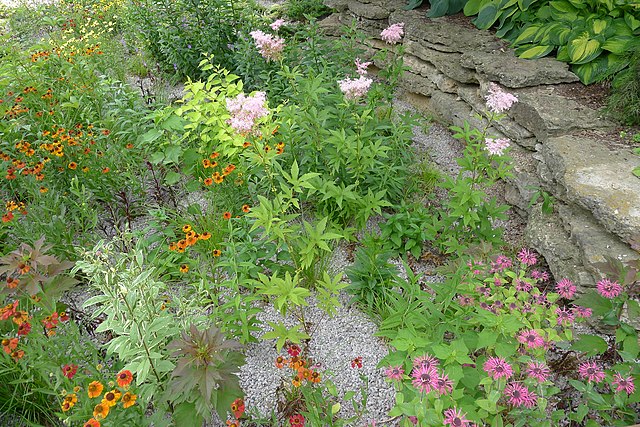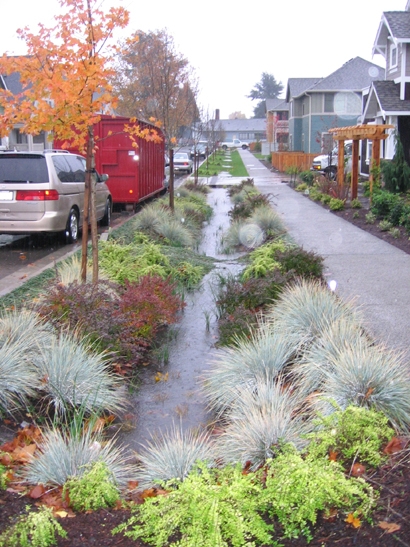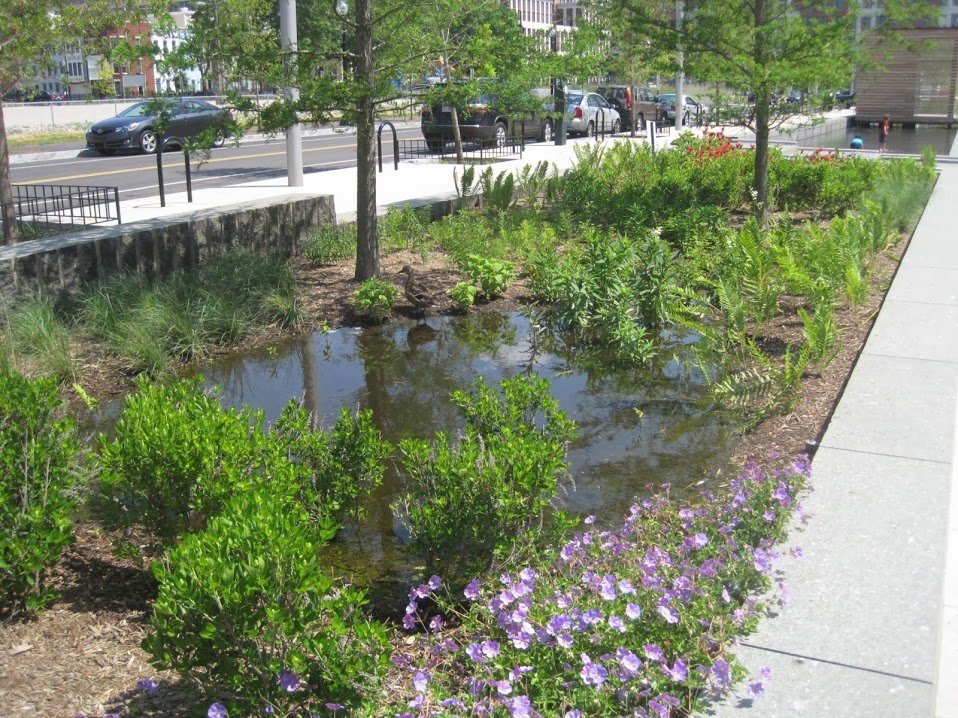Rain gardens are an excellent combination of beauty and function. They brighten up a space and provide a habitat for local wildlife and insects, while they also filter pollutants out of stormwater, help prevent flooding, and keep our waterways clean.
What Rain Gardens Do
Rain gardens are recessed areas in landscape planted native flowers and shrubs that collect water runoff, known as stormwater, and allow it to soak into the ground. Water ponds within the rain garden temporarily before it is filtered into the ground either into the underlying soils or an underdrain. While the water filters through the soil it is also absorbed by the vegetation planted in the garden. Pollutants in the water are removed as they filter through the soil and are absorbed by plants. More complex rain gardens with underdrains and amended soils are called bioretention.
A wide range of vegetation can be used in rain gardens, including grasses, trees, flowering perennials, and shrubs. Depending on the location within the rain garden, plants can have a variety of water needs from water-loving plants in the ponding area of the garden to drought-tolerant plants along the outside edge of the garden.
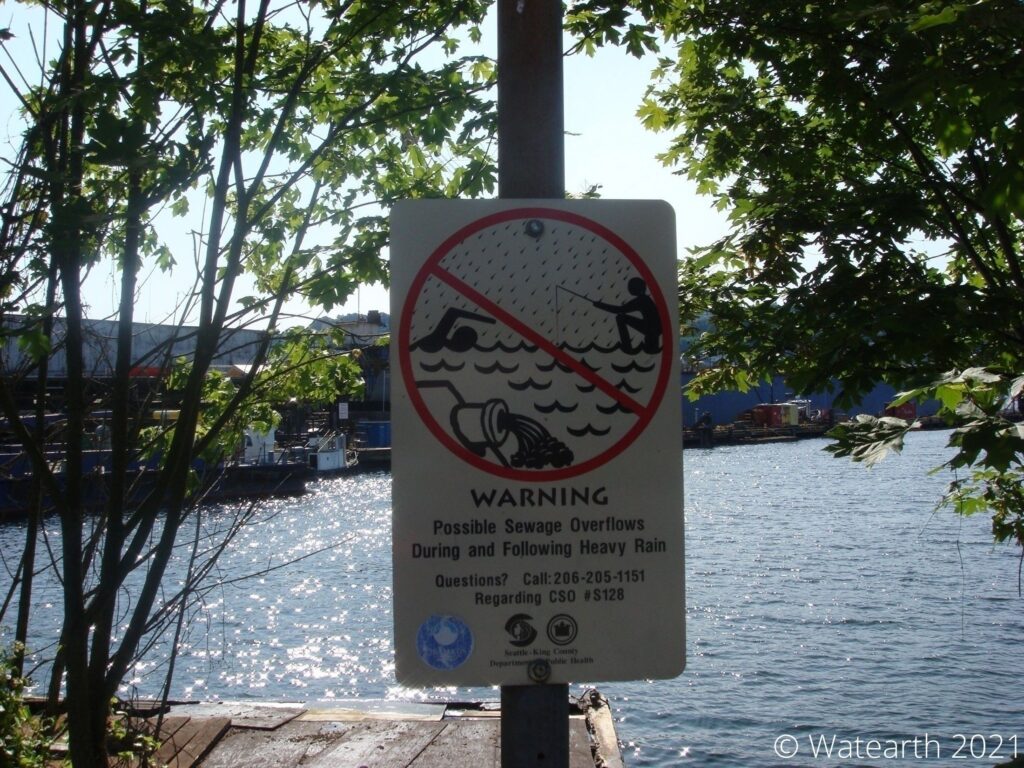
Sewage Overflow Warning
The Importance of Managing Stormwater
Stormwater is any precipitation that does not get directly absorbed into the soil and instead flows over the ground. When stormwater is absorbed into the ground, soil and plants can filter out pollutants. However, when stormwater flows over hard or paved surfaces there is nothing to filter out the pollutants in the water. Stormwater can include many pollutants such as fertilizers, pet waste, litter, oil and grease from vehicles, soaps, and other chemicals that have leaked or been spilled on the ground.
Stormwater runoff typically occurred during large storms when the rate of rainfall exceeded the rate at which the ground could absorb the water. However, today with increased development and more paved and impervious surfaces, stormwater runoff has increased. In cases where stormwater is flowing directly into rivers, streams, or other bodies of water, stormwater pollutants also flow into those bodies of water. In many cities stormwater flows into sewer systems where the water then goes to a treatment facility. However, when these sewer systems overflow, the excess untreated water is often discharged directly into local bodies of water, increasing the level of pollutants and sewage in the water. With the increase in impervious surfaces in cities, stormwater can frequently overload the sewer system causing an overflow. By incorporating rain gardens into landscapes, stormwater is better managed and runoff can be avoided. Learn more about stormwater sources and solutions.
Watearth Rain Gardens & Bioretention Projects
Watearth believes bioretention is best when it comes to stormwater and water quality.
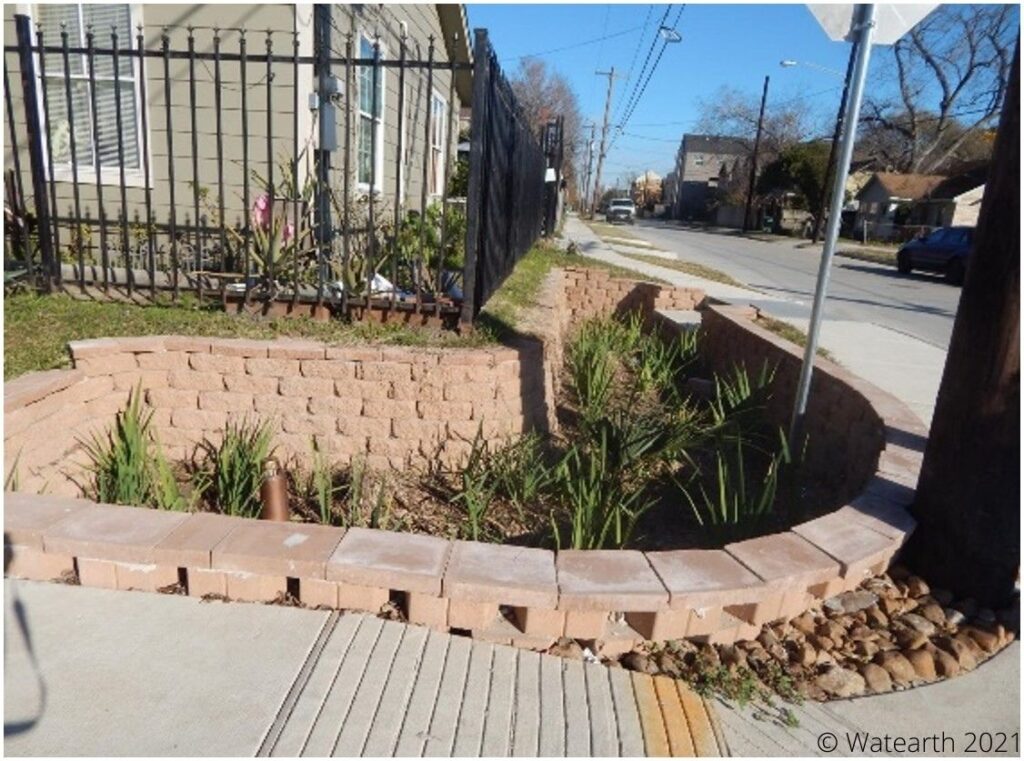
Cottage Grove LID Houston, TX 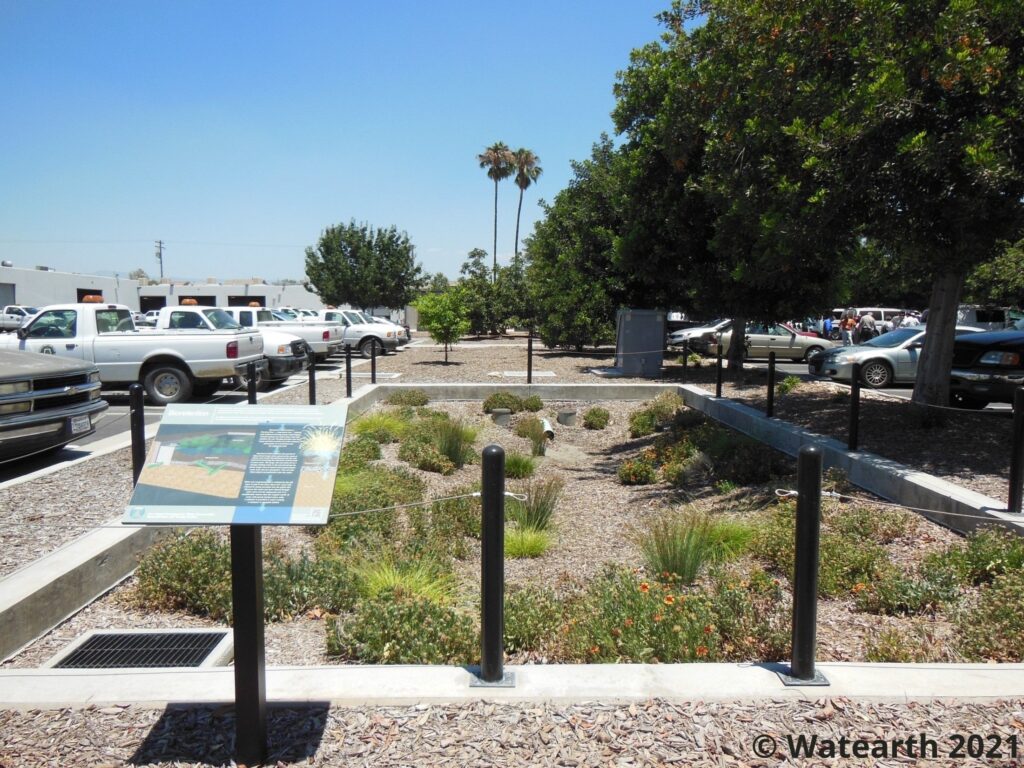
Riverside County Flood Control District
Shortly after the Louisville, KY Metropolitan Sewage District rain garden was completed there was a 100-year event that tested its capabilities. Water poured out of the downspout from the roof of the building filling the rain garden. The rain pooled in the garden and was ultimately absorbed and drained out of the rain garden avoiding flooding and an overflow of stormwater. Erosion control measures were put into place to form the downspout into the rain garden and proved very functional during the rain event allowing water to flow directly into the rain garden.
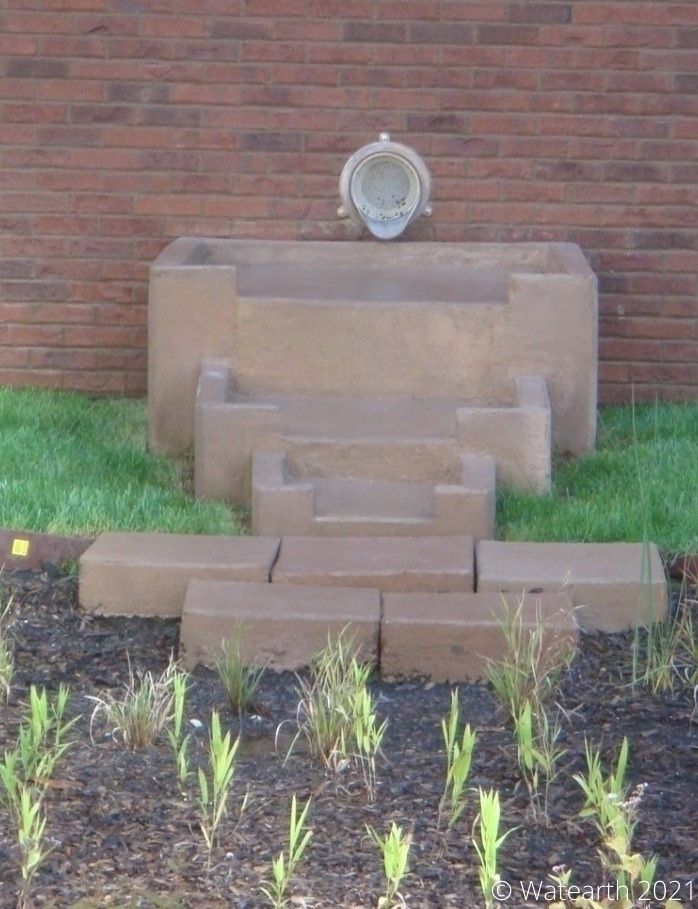
Erosion Control Measure 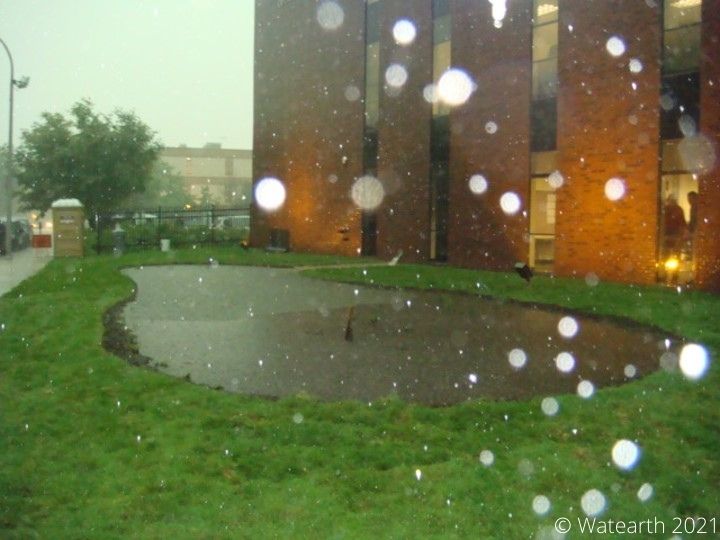
100-Year Event 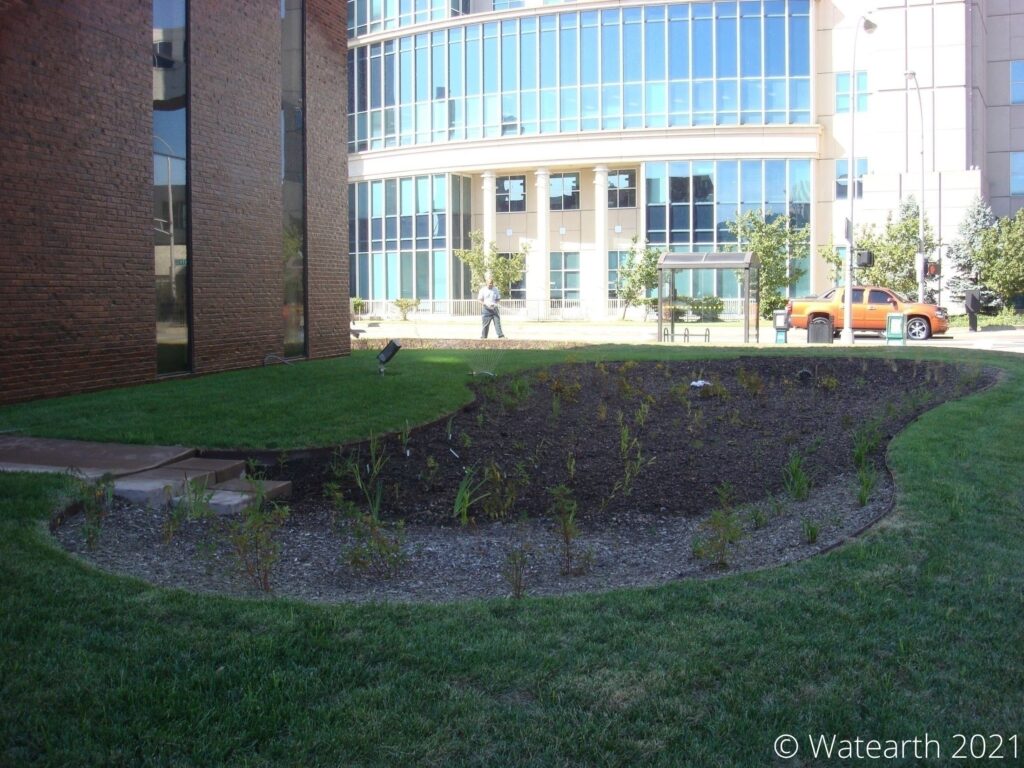
Louisville MSD Rain Garden
If you would like to learn more about Watearth and our services, please visit our website. We are happy to discuss your stormwater and bioretention project needs.
For more information about Watearth’s work with Rain Gardens and Bioretention, please see the Watearth webinar on Engineering Rain Gardens and Bioretention presented by Watearth President Jennifer J. Walker, P.E., D.WRE, CFM, ENV SP, QSD.

